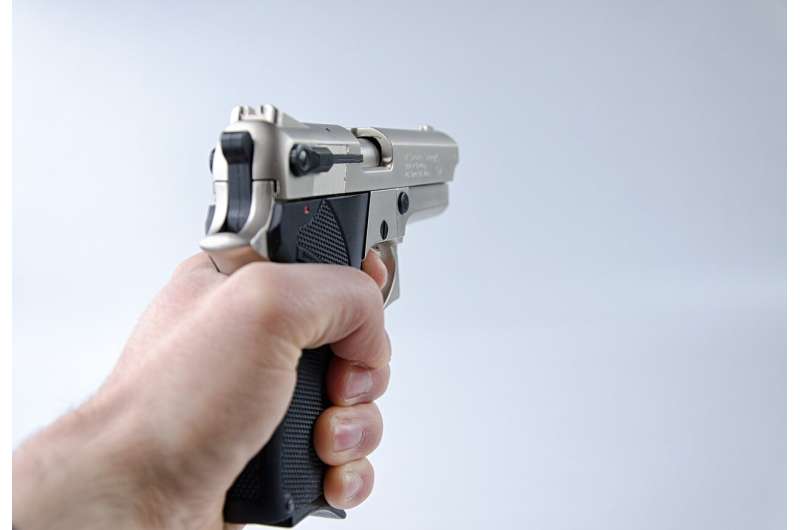Research team uncovers changes in the people and places impacted by interpersonal firearm violence following COVID-19

Previous work by researchers at the Lewis Katz School of Medicine at Temple University into the recent surge in firearm violence across Philadelphia during the COVID-19 pandemic found that it was strongly associated with the enactment of containment measures.
Now, new research published in the journal Preventive Medicine builds on those findings by examining the people and places impacted by interpersonal firearm violence during the COVID-19 pandemic in Philadelphia.
Utilizing the Philadelphia Police Department's registry of shooting victims from January 1, 2015, through March 31, 2021, the research team looked at the time, date, and block-level location of incidents, as well as demographic and mortality information about victims. They also examined mass shootings, which are incidents in which four or more people are shot within one hour within 100 meters (about one city block).
Following the implementation of COVID-19 containment measures in Philadelphia on March 16, 2020 (the date of non-essential business closures):
- The number of people shot per quarter nearly doubled from 331 pre-containment to 541 post-containment.
- The proportion of women shot increased by 39%, from 8.2% to 11.4% of all shootings.
- The proportion of children shot increased by 17%, from 7.8% to 9.0% of all shootings.
- Among children, there was a 13% increase in shootings from noon-11:59 p.m.
- Compared to other groups, Black women were 11% more likely and Black children were 8% more likely to be shot following COVID containment.
- Mass shootings increased by 53% from 3.6% of all shootings prior to containment measures to 5.5% of all shootings after containment measures were implemented.
- The increase in mass shootings did not fully explain the observed changes in the people impacted by firearm violence.
- Shootings were less likely to be fatal, with 17.3% of shootings resulting in death post-containment compared to a shooting fatality rate of 20.2% pre-containment.
- There were increased rates of shootings in parts of Northeast, Eastern and Southwest Philadelphia and an increase in mass shootings in the Northeast.
"Our research reveals a shift in the epidemiology and an increasing severity of interpersonal firearm violence in Philadelphia after measures were put in place to contain the spread of COVID-19," said Jessica H. Beard, MD, MPH, FACS, Assistant Professor of Surgery and Director of Trauma Research at the Katz School of Medicine and the study's corresponding author. "Absent robust social and economic support, the containment policies likely worsened structural inequalities that already existed. Only by examining the root causes of interpersonal firearm violence and gaining a better understanding of these changes that have occurred, can we address the epidemic of gun violence in the city. From a public health perspective, solutions could include investment in public education and employment, as well as increasing access to social services and support, such as medical assistance."
More information: Iman N. Afif et al, The changing epidemiology of interpersonal firearm violence during the COVID-19 pandemic in Philadelphia, PA, Preventive Medicine (2022). DOI: 10.1016/j.ypmed.2022.107020




















